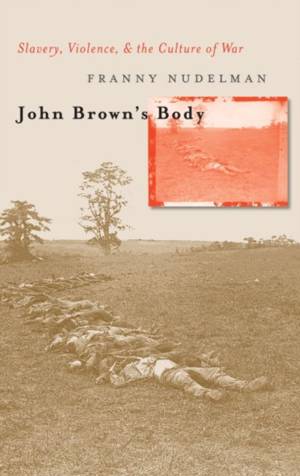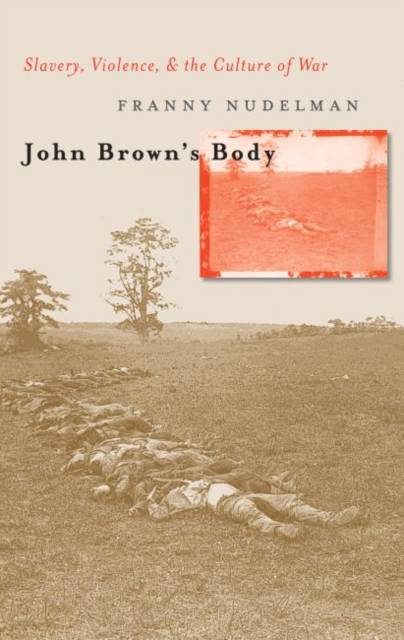
- Afhalen na 1 uur in een winkel met voorraad
- Gratis thuislevering in België vanaf € 30
- Ruim aanbod met 7 miljoen producten
- Afhalen na 1 uur in een winkel met voorraad
- Gratis thuislevering in België vanaf € 30
- Ruim aanbod met 7 miljoen producten
Zoeken
Omschrijving
Singing "John Brown's Body" as they marched to war, Union soldiers sought to steel themselves in the face of impending death. As the bodies of these soldiers accumulated in the wake of battle, writers, artists, and politicians extolled their deaths as a means to national unity and rebirth. Many scholars have followed suit, and the Civil War is often remembered as an inaugural moment in the development of national identity.
Revisiting the culture of the Civil War, Franny Nudelman analyzes the idealization of mass death and explores alternative ways of depicting the violence of war. Considering martyred soldiers in relation to suffering slaves, she argues that responses to wartime death cannot be fully understood without attention to the brutality directed against African Americans during the antebellum era.
Throughout, Nudelman focuses not only on representations of the dead but also on practical methods for handling, studying, and commemorating corpses. She narrates heated conflicts over the political significance of the dead: whether in the anatomy classroom or the Army Medical Museum, at the military scaffold or the national cemetery, the corpse was prized as a source of authority. Integrating the study of death, oppression, and war, John Brown's Body makes an important contribution to a growing body of scholarship that meditates on the relationship between violence and culture.
Revisiting the culture of the Civil War, Franny Nudelman analyzes the idealization of mass death and explores alternative ways of depicting the violence of war. Considering martyred soldiers in relation to suffering slaves, she argues that responses to wartime death cannot be fully understood without attention to the brutality directed against African Americans during the antebellum era.
Throughout, Nudelman focuses not only on representations of the dead but also on practical methods for handling, studying, and commemorating corpses. She narrates heated conflicts over the political significance of the dead: whether in the anatomy classroom or the Army Medical Museum, at the military scaffold or the national cemetery, the corpse was prized as a source of authority. Integrating the study of death, oppression, and war, John Brown's Body makes an important contribution to a growing body of scholarship that meditates on the relationship between violence and culture.
Specificaties
Betrokkenen
- Auteur(s):
- Uitgeverij:
Inhoud
- Aantal bladzijden:
- 240
- Taal:
- Engels
- Reeks:
Eigenschappen
- Productcode (EAN):
- 9780807855577
- Verschijningsdatum:
- 13/09/2004
- Uitvoering:
- Paperback
- Formaat:
- Trade paperback (VS)
- Afmetingen:
- 156 mm x 235 mm
- Gewicht:
- 353 g

Alleen bij Standaard Boekhandel
+ 115 punten op je klantenkaart van Standaard Boekhandel
Beoordelingen
We publiceren alleen reviews die voldoen aan de voorwaarden voor reviews. Bekijk onze voorwaarden voor reviews.







